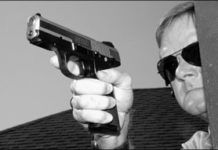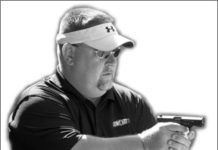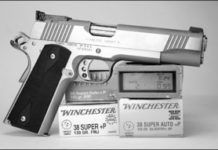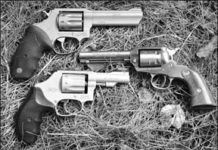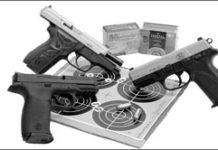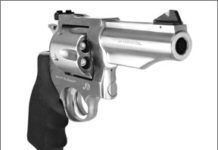Lone Wolf Distributors Custom Glock Slides
Winchester Wins FBI 40 S&W Ammunition Contract
Adjustable Sights For Charter Arms Revolvers
Arizona G&FC Meeting Discusses Spent Ammo
Pink Personal Protection Power
Colt Melby Retires from S&W Board of Directors
9mm Polymer Pistols: Rugers SR9 Is Good, But Not Great
9mm Self-Defense Autoloaders: CZs Rami 2075 P Is a Bargain
Shooters like 9mm pistols for many reasons, chief among them being their reputation for manageable recoil with at least minimum acceptable stopping power for a self-defense cartridge. Also, 9mm guns can be made small and flat, which makes them suitable for comfortable concealed carry.
We recently bought a trio of such guns at Fountain Firearms in Houston (www.fountainfirearms.com, 281-561-8447). They were of relatively similar size, but different in almost every other way—and these differences made an impression on our testers that affected how we graded the pistols.
Cartridge and Gun Tandems In .357 Sig, .38 Super, .40 S&W
More .22 Revolvers for the Trail: S&W AirLite Still Our Choice
.40 S&W Concealables: M&P40 Edges Out Sigarms P229 SAS
4-Inch .44 Magnum/Special Revolvers: Ruger Redhawk Wins
When new revolvers are introduced, they don't get the fanfare afforded the latest semi-auto. That's why you might have missed out on the latest crop of big-bore wheelguns.
In this test we will try to make up for it by pitting two steel-framed forty-fours against an ultra-lightweight revolver of the same caliber — Taurus's 444MULTI, $666 — that could make carrying a bigger gun more inviting. The stainless-steel guns are the $916 Smith & Wesson Model 629 No. 163603 and Ruger's $780 Redhawk KRH-444.
[IMGCAP(1)]If there is any comparison to be drawn between these revolvers and the world of semi-automatic pistols, it is perhaps the appeal of the big bullet. The small-bore high-capacity frenzy seems to have abated, and now it seems that every manufacturer is making a 45-caliber pistol. With the release of more .44s, revolver makers may also be saying when capacity is limited, why not chamber a larger caliber? But when that thinking includes .44 Magnum/.44 Special ammo, two important questions remain: Will the Magnum ammunition prove too punishing?, and will the .44 Specials be accurate enough?
To answer these questions we tested from a distance of 25 yards with two loads of .44 Remington Magnum and two loads of .44 S&W Special. They were 240-grain Federal Fusion .44 Magnum No. F44FS1, 240-grain American Eagle .44 Magnum jacketed hollow points No. AE44A, 200-grain Winchester .44 Special Silvertip HP No. X44STHPS2, and Winchester's 246-grain lead roundnose ammunition No. X44SP.
Before testing each gun, we lubricated it with BreakFree CLP. Lubrication points on the revolvers were the barrel and chamber bores, the ratchet lugs, and the bushing in front of the cylinder. We also pulled back the hammer and placed a few drops of oil inside the frame. Whenever we transitioned from the Special to the Magnum loads, we scrubbed inside each chamber. This is because the shorter Special rounds can deposit debris at the hotspot where the tip of each case empties into the chambers. A buildup of debris can reduce the volume of the chamber and increase pressure. In extreme conditions, such as when it becomes necessary to push the longer magnum rounds into place, the extra pressure can be dangerous.
To collect accuracy data, all shots from the bench were fired single action only from a distance of 25 yards. Repeat fire was tested using the double-action trigger at shorter distances. We didn't expect to be able to shoot the magnum ammunition quickly, but we wondered about the .44 Special loads. Was there enough stopping power from each round to justify a shorter recovery time between each shot? Let's see how our six shooters measured up.































